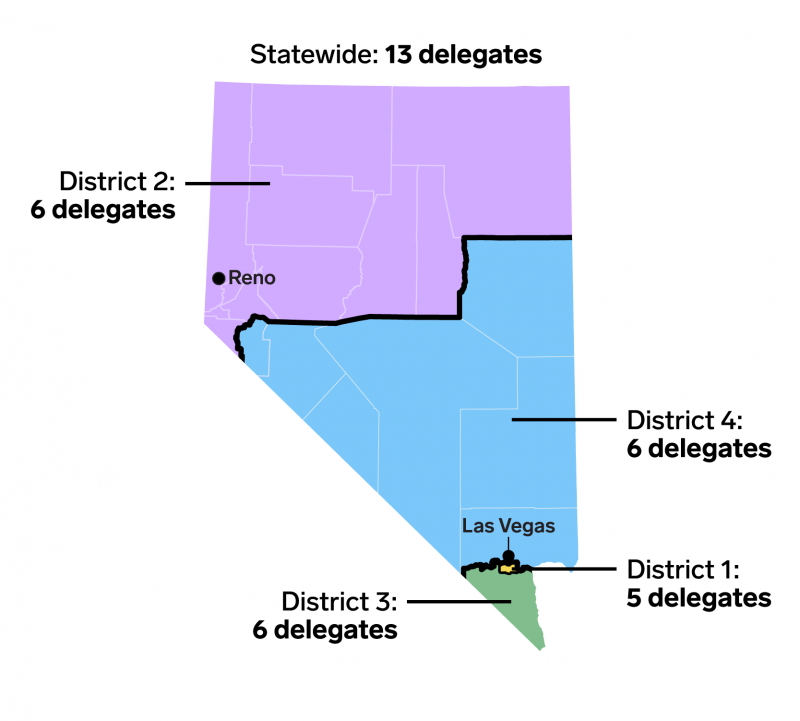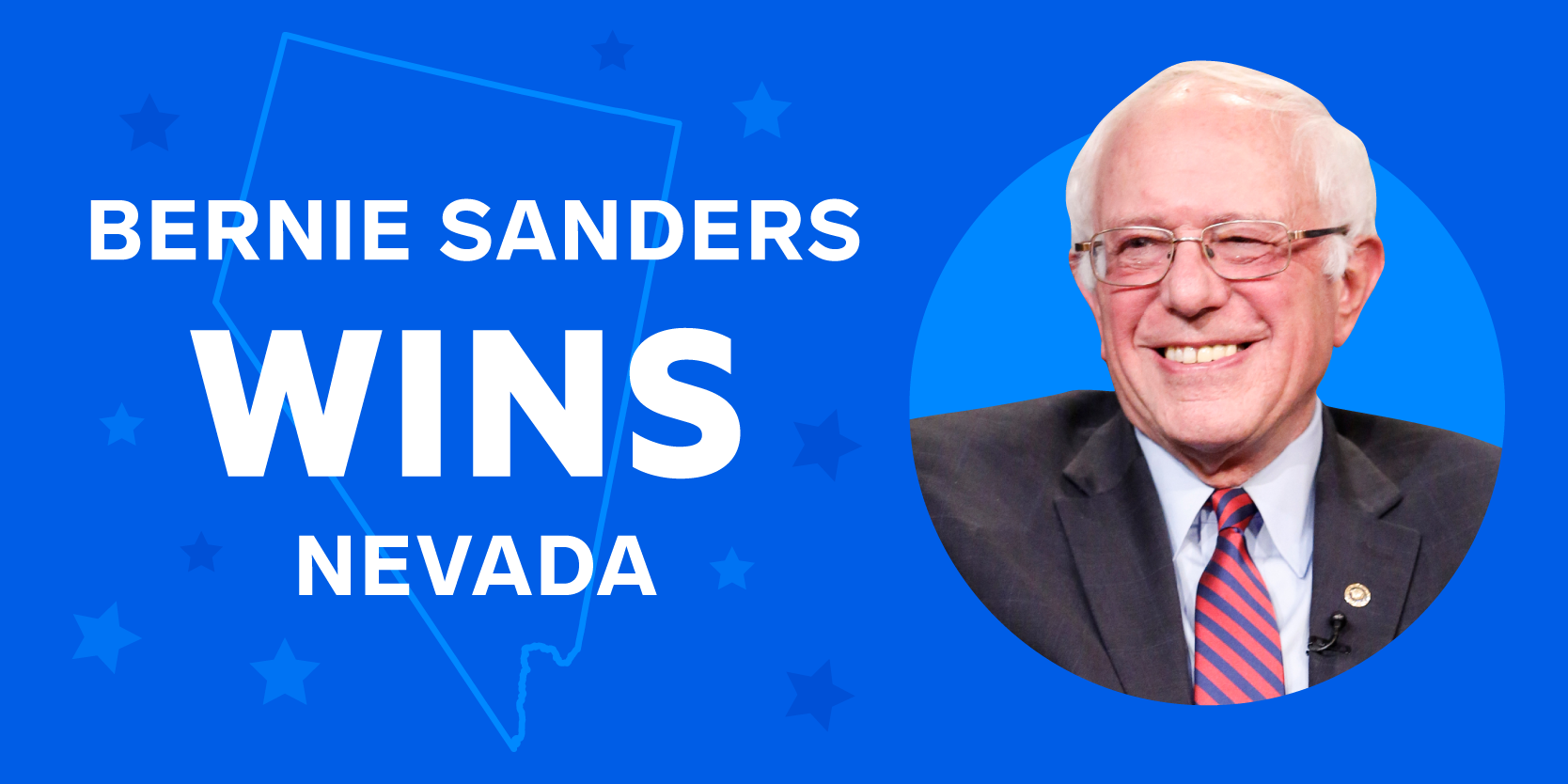- Sanders wins the Nevada caucus with 100% of the results reporting as of 12:30 p.m. Pacific Time and 3:30 p.m. Eastern Time on Monday, February 24.
- The Vermont senator has now officially won the popular vote in the first three primary contests of Iowa, New Hampshire, and Nevada.
- Results were released slowly by the Nevada Democratic party to avoid a similar situation from Iowa.
- Visit Business Insider’s homepage for more stories.
Nevada’s caution in reporting results meant that only about 60% of results were announced the day of the caucus, leaving Democrats waiting for the final outcome and complete delegate reckoning. Sanders holds a decisive lead over his opponents now with 100% of precincts reporting – to see how his performance is translating to delegates, follow along with our live delegate tracker here.
Nevada Democratic caucus live results
Here are the returns from the final ballot results:
Here are the results from the first ballot, or alignment:
The third - and most important - set of results are the county convention delegate equivalents, which will be converted into national pledged delegates.
These will update live over the course of the day as we get new results.
Here's how Democrats will elect their presidential nominee over the next several months
Catch up on live coverage from the caucuses:
Caucus coverage:
- Here's the key reason Bernie Sanders dominated in Nevada and Pete Buttigieg and Amy Klobuchar came up short
- Elizabeth Warren's stellar debate in Las Vegas came too late to give her a big win in the Nevada caucuses
- Bill de Blasio tells Pete Buttigieg to 'show some humility' after he got his 'ass kicked' in Nevada and said he doesn't have diverse supporters
- MSNBC anchors keep comparing Sanders' campaign and its supporters to Nazis, and they're being called to resign
- Despite previous attacks, Medicare for All proved a huge winner for Bernie Sanders for the third primary in a row, polls show
- Bernie Sanders wins the Nevada Democratic caucuses
- Cable news hosts and pundits freak out as Bernie Sanders looks to be running away with Nevada
- Bernie Sanders' Nevada win cements his frontrunner status
Pre-caucus:
- Joe Biden's support among black voters is eroding days ahead of make-or-break primaries
- Elizabeth Warren bought a full-page ad in a GOP billionaire's newspaper so she could taunt him about the $2.3 billion he'd pay under year one of her wealth tax
- Elizabeth Warren shredded rivals in Nevada. Here's why it was a critical time go on offense.
- Amy Klobuchar and Pete Buttigieg clashed more than ever in the Vegas debate. These numbers show why.
- Read more about the caucus process will unfold: The Nevada caucuses are the first since the disaster in Iowa. Here's how it will work.
What's at stake in the Nevada caucuses:
Nevada only accounts for 36, or 0.9% of the delegates allocated throughout the nomination process, but holds disproportionate importance by virtue of being the first state with a significant non-white population to express its voting preferences.
Sanders has won at least 19, former Vice President Joe Biden has won at least seven, and former Mayor Pete Buttigieg has won at least two out of Nevada's 36 pledged delegates.
The first two states in the process, Iowa and New Hampshire, are both over 93% white. In Nevada, however, just 49% of the population is non-Hispanic white, compared to 29% that is Hispanic or Latino of any race, 10% that is African-American, and 9% that is Asian.
Of Nevada's 36 national pledged delegates:
- 23 are allocated proportionally between the state's four congressional districts. The first district gets five delegates, and the three others are allocated six delegates each.
- 8 at-large and 5 PLEO (party leader and elected official) delegates will be decided and allocated based on the statewide popular vote.

Like in most other states, candidates must break 15% of the vote in a given district or voting area to win any delegates at all.
Unlike a regular primary, Nevada is a caucus, meaning that people will gather in communal locations to express their preferences for president. The caucuses have two rounds of preference expression, or alignments, meaning caucusgoers have an opportunity to shift their support.
Caucusgoers whose first-choice candidate does not meet the 15% viability threshold in the first alignment can either switch their support to a candidate who is viable, try to make their chosen candidate viable on the second round, or be uncommitted,
DELEGATE COUNT: Here's who's winning the race for the 2020 Democratic nomination
Who did the polling say is ahead?
The state of Nevada and its presidential caucuses, in particular, are notoriously difficult and expensive to accurately poll.
As Vox recently reported, a higher-than-average proportion of the electorate in Nevada works in the casino and nightlife industry, meaning that their population has higher turnover and is more fluid than in most states, giving pollsters a small base of registered or likely voters to work with.
And many of those with jobs on the Vegas Strip or in other nightlife or hospitality-related careers work night shifts or outside the bounds of a typical nine-to-five schedule, making them much harder to reach by telephone.
On top of that, Nevada only started using presidential caucuses instead of primaries in 2008, meaning that pollsters have somewhat limited data with which to build accurate models and weights for their caucus surveys, a problem compounded by the fluctuating population in Nevada.
According to FiveThirtyEight's aggregated tracker of Nevada polls, Sanders held comfortable lead on the day of the caucuses, polling at 30% on average with the other candidates mostly far behind. On the day of the caucuses, Buttigieg is at 15.3%, Biden is at 14.4%, Warren is at 12%, Steyer at 10.2%, and Klobuchar is at 9%.
But the additional unpredictability of caucus turnout, the ranked-choice system used in early voting, and the re-alignment process in the caucuses themselves mean that the final result could be quite different from what initial polls indicate.
While Nevada was once a battleground state, it's been swinging into solid Democratic territory for the past several election cycles. Former Democratic nominees President Barack Obama and Hillary Clinton comfortably carried the state in the 2008, 2012, and 2016 general elections, and five out the state's six congressional representatives are now Democrats.
In 2016, former Democratic nominee Hillary Clinton won the Nevada caucuses with 52.6% of the vote compared to 47.3% for Sen. Bernie Sanders.
Read more:
Bernie Sanders suggests Russia might be behind the 'ugly' online attacks from 'Bernie Bros'
US officials told Bernie Sanders Russia is trying to help him win the Democratic nomination
Watch the top 5 moments of Nevada's combative Democratic debate
